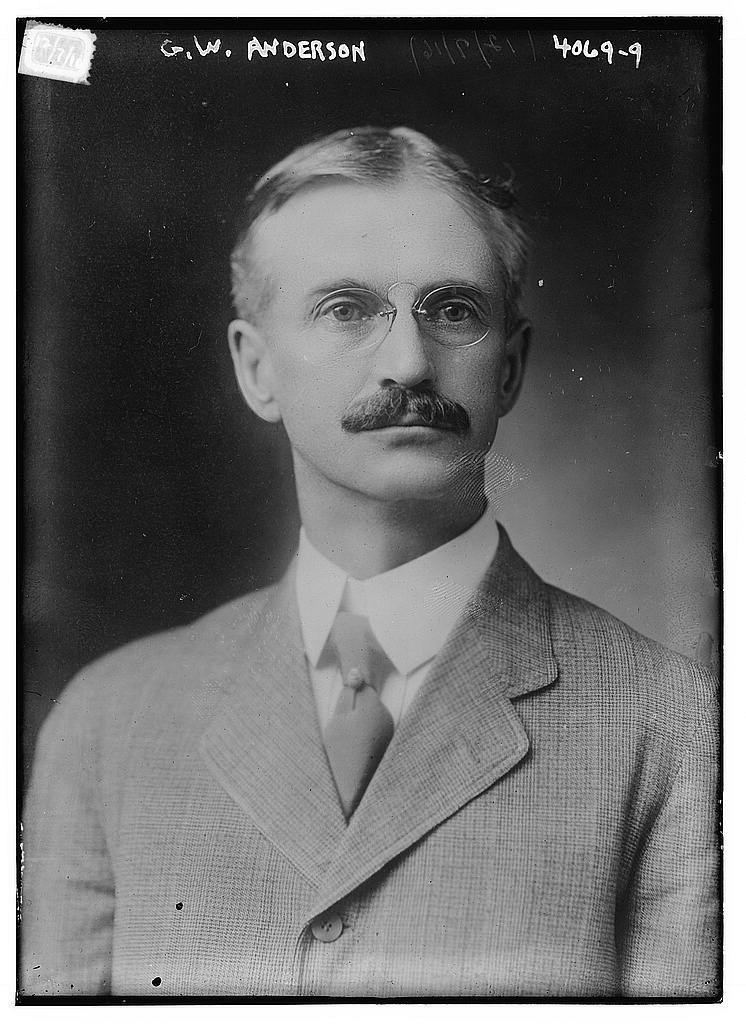Preceded by Frederic Dodge Name George Anderson Preceded by Asa P. French Role Judge | Nationality American Occupation Attorney
Judge | |
 | ||
Born September 1, 1861
Acworth, New Hampshire ( 1861-09-01 ) Alma mater Williams College
Boston University School of Law Died February 14, 1938, DeLand, Florida, United States Education Boston University, Boston University School of Law, Williams College | ||
Succeeded by James Madison Morton, Jr. | ||
George Weston Anderson (September 1, 1861 – February 14, 1938) was a judge of the United States Court of Appeals for the First Circuit.
Contents
Biography
Born on a farm in Acworth, New Hampshire, Anderson received an A.B. with honors from Williams College in 1886 and an LL.B. magna cum laude from the Boston University School of Law in 1890. He then went into private practice as a lawyer in Boston, Massachusetts. While in practice, he was an instructor at the Boston University School of Law from 1891 to 1894. He once ran for state Attorney General, served on the Boston School Committee, and in 1913 accepted an appointment to the Massachusetts Commerce Commission. He later served on the state's Public Service Commission.
President Woodrow Wilson appointed him United States Attorney for Massachusetts and he served in that position from 1914 to 1917, followed by one year as a member of the Interstate Commerce Commission. In 1916, he worked to win Senate approval of Louis Brandeis when he was nominated to the Supreme Court, serving as counsel to the subcommittee that considered the nomination and conducting some of the crucial cross examination of witnesses.
1917 Massachusetts Constitutional Convention
In 1916 the Massachusetts legislature and electorate approved a calling of a Constitutional Convention. Anderson was elected as a Delegate at Large to serve as a member of the Massachusetts Constitutional Convention of 1917.
Wilson named Anderson as a Judge of the First Circuit on October 1, 1918, to a seat vacated by Frederic Dodge. Anderson was confirmed by the United States Senate and received his commission on October 24, 1918. He served as an active judge for 13 years and is remembered for dissenting when the court upheld some of the convictions arising from the Red Scare of 1919-20. In June 1920, he effectively prevented any further resumption of the Palmer raids of November 1919 and January 1920 when his decision in the case of Colyer v. Skeffington ordered the discharge of 17 arrested radicals. His opinion concluded that there was no evidence that the Communist Party of the United States had urged a violent overthrow of the U.S. government and he strongly criticized the Department of Justice for using entrapment and for its failure to follow proper legal procedures. Of the deportation proceedings he wrote: "A more lawless proceeding it is hard for anyone to conceive.... I can hardly sit on the bench as an American citizen and restrain my indignation. I view with horror such proceedings as this."
The Colyer case remained controversial. For example, during Senate hearings held to consider charges that Attorney General A. Mitchell Palmer had ignored due process in arresting radicals in late 1919 and early 1920, a former Department of Justice official testified that Anderson had shown favoritism to witnesses on behalf of the defendant aliens in the Colyer deportation case.
Anderson was married for eight years to Winnie E. Mitchell of Mason, New Hampshire, until her death. In 1897 he married Addie Earle Kenerson of Boston, who survived him. They had two sons and a daughter. He served as an active judge until September 30, 1931, when he took what is now referred to as senior status. The same year, he was elected a Fellow of the American Academy of Arts and Sciences. He lived in Wellesley Hills, Massachusetts, and died at his winter home in DeLand, Florida, in 1938.
